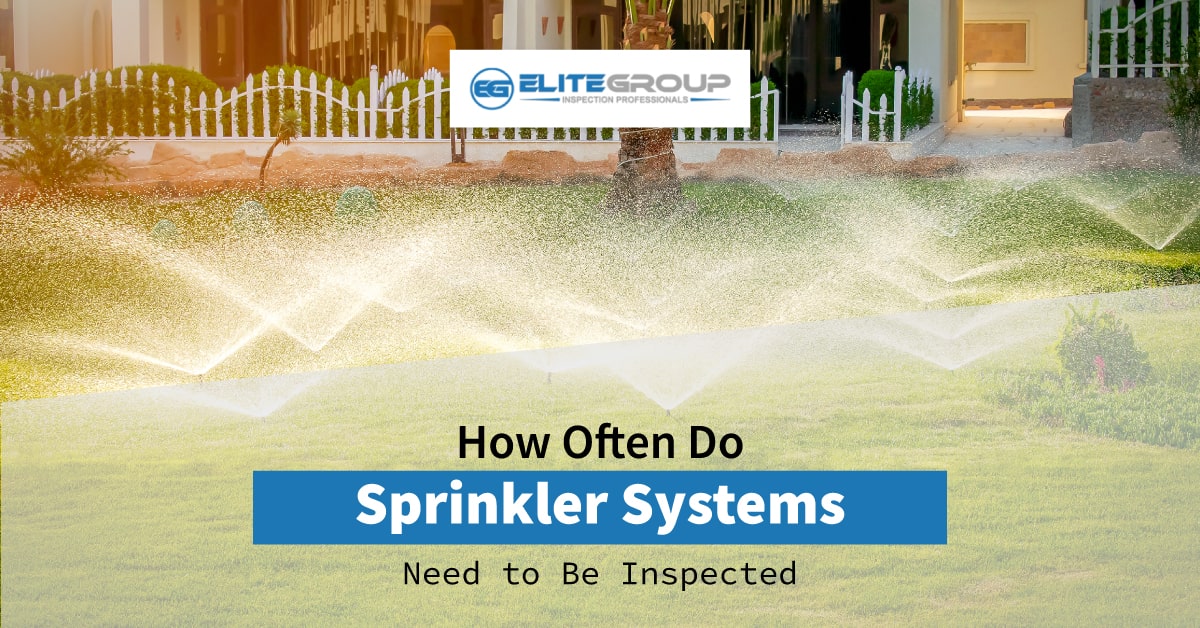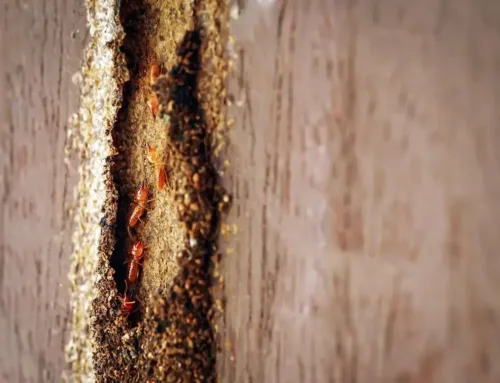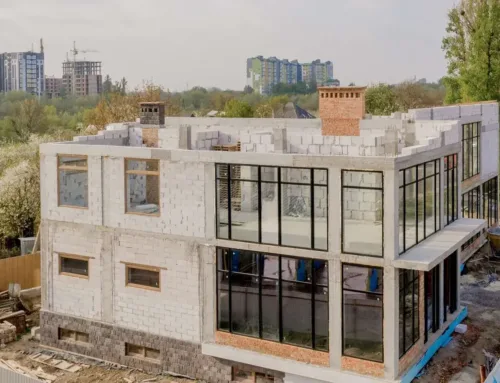Introduction
Sprinkler systems are an essential aspect of fire prevention in all structures, including homes, businesses, and factories. They’re on the front lines of preventing damage to homes and lives from flames. However, sprinkler systems, like any other mechanical system, require routine maintenance and inspection to ensure they work properly, not just when needed. Are you wondering how often do sprinkler systems need to be inspected? Elite Inspections resolves all your queries regarding sprinkler system inspection.
In this blog, we will explore the significance of sprinkler system inspection, the frequency at which inspections should be conducted, and the factors influencing sprinkler system inspection costs. So let’s get into it:
Significance of Sprinkler System Inspection
Sprinkler system inspections play a vital role in identifying potential issues and maintaining the overall efficiency of the system. Regular examinations help detect and address problems early on, preventing potential system failures during emergencies. Home inspections are explained here for buyers and sellers. Well-maintained sprinkler systems reduce property damage and personal injury. Inspecting your sprinkler system on a regular basis is crucial for many reasons.
Life Safety
Sprinkler systems are a critical component of fire protection in buildings. They detect and control flames, giving inhabitants time to leave. Regular inspections ensure the system can respond to fire emergencies and save lives.
Property Protection
A functional sprinkler system can reduce building damage in a fire. Regular system checks reduce the risk of a fire spreading quickly and causing significant damage.
Early Detection of Issues
Regular inspections allow trained professionals to identify potential problems or malfunctions in the system. Addressing these issues promptly can prevent system failure when it is needed most.
Preventive Maintenance
Inspections often involve routine maintenance and testing of sprinkler system components. This proactive approach helps ensure the system remains reliable and effective over time.
Minimizing Business Disruptions
A fire incident can cause significant disruptions to business operations. A well-maintained sprinkler system reduces the chances of a major fire incident, helping to maintain business continuity.
Optimal Performance
Regular inspections can fine-tune the sprinkler system’s performance, ensuring it responds optimally to various fire scenarios.
Longevity of the System
Timely inspections and maintenance can extend the lifespan of the sprinkler system, saving costs in the long run by avoiding premature replacements.
How Often Do Sprinkler Systems Need to Be Inspected
Industry standards, local regulations, and the needs of the individual structure determine the frequency of sprinkler system inspections. In most cases, annual inspections of sprinkler systems are recommended. Inspections may need to be performed more frequently (every six months or quarterly) at buildings with higher fire risks, such as industrial complexes or healthcare facilities. There are some general guidelines on how often do sprinkler systems need to be inspected listed below:
Annual Inspections
Most fire codes and insurance companies require annual inspections of sprinkler systems. Professionals with the necessary training typically carry out these inspections and evaluate the system’s overall health and functionality.
Quarterly Inspections
In some cases, quarterly inspections may be necessary to ensure ongoing reliability and performance, especially for buildings with a higher fire risk or more complex systems.
Monthly Inspections
Some sprinkler system components, such as control valves, alarms, and water pressure gauges, may require monthly checks to ensure they are in working order.
Weekly Inspections
Some components might need weekly inspections in certain situations, particularly in high-hazard environments. These inspections are often focused on specific elements like control valves and water supplies.
Obstruction Inspections
The National Fire Protection Association (NFPA) recommends conducting an obstruction inspection of the sprinkler system piping every five years to ensure no blockages could hinder water flow in the event of a fire.
Factors Affecting Sprinkler System Inspection Cost
It’s essential to choose a reputable and experienced inspection service provider that can tailor the inspection process to the specific needs of the building and its environment. Sprinkler system inspection costs can be influenced by various factors, including location, environmental, climatic, and other factors. Here are some key factors that can affect sprinkler system inspection costs:
Size and Complexity of the System
Larger and more complex sprinkler systems require more time and resources to inspect thoroughly. Buildings with multiple zones, high ceilings, or intricate piping layouts may increase the inspection cost.
Accessibility
If the sprinkler system components are difficult to access, such as in confined spaces or areas with limited entry points, it can add complexity to the inspection process and potentially increase the cost.
Location and Distance
The geographical location of the building can affect inspection costs. Buildings situated in remote areas may incur higher travel expenses for inspection teams.
Climate and Weather Conditions
Extreme weather conditions, such as heavy rain, snow, or freezing temperatures, can impact the inspection process. Inspectors might need to take extra precautions or reschedule inspections due to adverse weather, which can result in additional costs or delays. Read here about the environmental factors you must consider during a home inspection.
Age and Condition of the System
Older sprinkler systems or those in poor condition may require more thorough inspections and potential repairs, leading to increased costs.
Certifications and Expertise
Hiring certified and experienced inspectors may come at a higher cost than hiring less qualified individuals, but it ensures a more comprehensive and accurate system assessment.
Testing and Maintenance
In addition to inspections, some sprinkler systems require testing and maintenance services, which can contribute to the overall cost.
Environmental Hazards
Buildings located in areas prone to environmental hazards, such as flooding, earthquakes, or chemical exposure, may require additional inspections to assess the system’s resilience against these threats.
Emergency Services and Response Time
Some inspection providers may offer emergency services or shorter response times for urgent situations. Opting for such services might come with higher costs.
Conclusion
Regular sprinkler system inspections are critical for maintaining fire safety and preventing potential disasters. How often do sprinkler systems need to be inspected? Annual inspections, supplemented by periodic tests, ensure the sprinkler system functions optimally. Building owners and managers must adhere to the recommended inspection schedules, considering any specific requirements imposed by local authorities.
While sprinkler system inspection costs may vary based on factors mentioned earlier, it is a worthwhile investment to safeguard lives, protect property, and ensure compliance with fire safety regulations. By prioritizing regular inspections, we can enhance the reliability of sprinkler systems and contribute to a safer environment for everyone.





